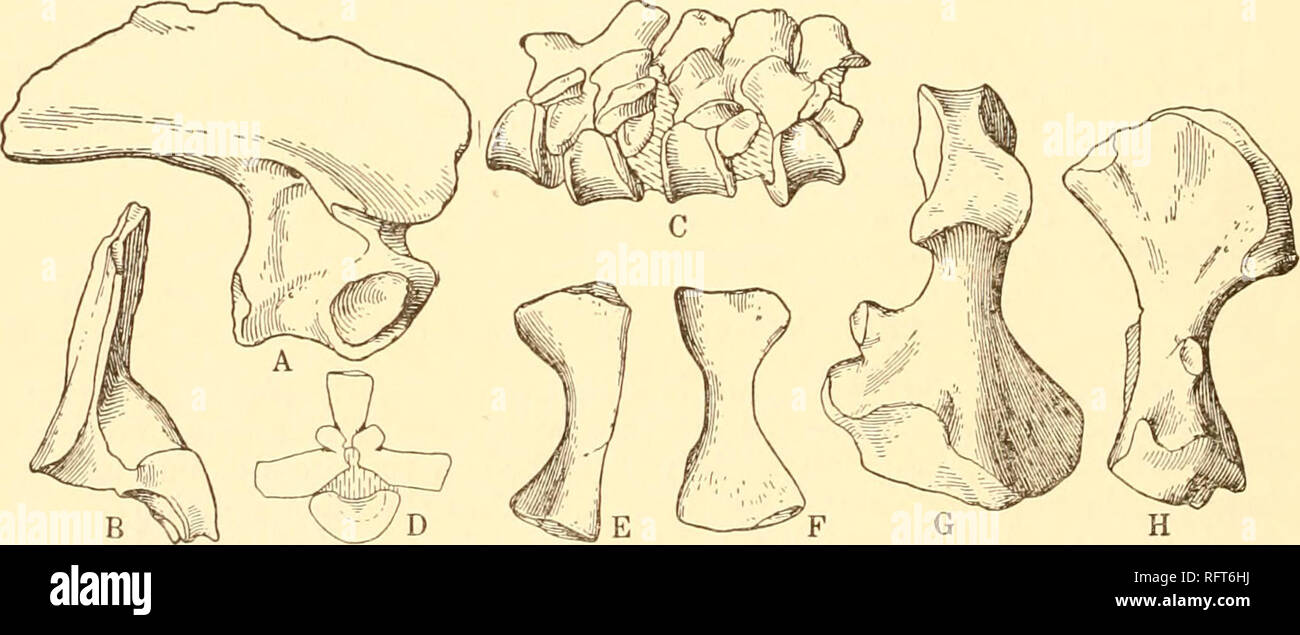. Carnegie Institution of Washington publication. 104 AMPHIBIA AND PISCES OF THE PERMIAN OF NORTH AMERICA activity. The habits of the creature can hardly be in doubt. The superior position of eyes and nostrils shows that it lay nearly submerged until some prey came within reach, when a sudden rush with its very capacious mouth extended ended in the engulfment of the prey. The coprolites show remains of fish and amphibian bones (Neumeyer, 63). Parioxys ferricolus and Anisodex imbricarius Cope. So little is known of these forms that the discussion of their morphology must await future discoverie

Image details
Contributor:
Book Worm / Alamy Stock PhotoImage ID:
RFT6HJFile size:
7.2 MB (267.7 KB Compressed download)Releases:
Model - no | Property - noDo I need a release?Dimensions:
2441 x 1024 px | 41.3 x 17.3 cm | 16.3 x 6.8 inches | 150dpiMore information:
This image is a public domain image, which means either that copyright has expired in the image or the copyright holder has waived their copyright. Alamy charges you a fee for access to the high resolution copy of the image.
This image could have imperfections as it’s either historical or reportage.
. Carnegie Institution of Washington publication. 104 AMPHIBIA AND PISCES OF THE PERMIAN OF NORTH AMERICA activity. The habits of the creature can hardly be in doubt. The superior position of eyes and nostrils shows that it lay nearly submerged until some prey came within reach, when a sudden rush with its very capacious mouth extended ended in the engulfment of the prey. The coprolites show remains of fish and amphibian bones (Neumeyer, 63). Parioxys ferricolus and Anisodex imbricarius Cope. So little is known of these forms that the discussion of their morphology must await future discoveries. Genus ACHELOMA Cope. Acheloma cumminsi Cope (page 34). (Plate 11.) Characteristic specimen: The type No. 4205 Am. Mus. The original description of this genus and species is good; a few points are added. The skull is incomplete, and there is considerable plaster in the facial and postorbital regions, where vacuities occur in Trematops Williston, which the skull resembles in many respects; but the two are distinct. The skull is higher in the cranial region than Eryops, and there is a decided preorbital contraction. The sutures can not be made out.. Fig. 34.—Acheloma cumminsi. No. 4205 Am. Mus. X J^. A. Lateral view of right scapula. B. Anterior view of same. C. Lateral view of four dorsal vertebrje. D. Diagrammatic anterior view of a dorsal vertebra. E. Ulna. F. Radius. G. Anterior view of right humerus. H. Posterior edge of same. The scapula presents a most remarkable appearance, which attracted Cope's attention (see original description). In the present position of the scapulae, which is evidently a little too high, the blade is set at an angle of 45° to the vertical and overlies the back; the coracoid portion is also at an angle of 45° from the vertical, so that the two parts of the scapula are at right angles to each other (see fig. 34, a and b). The blade is elongate and rather wide; the posterior end is thick and shows extensive cartilaginous attach- ment. The upper